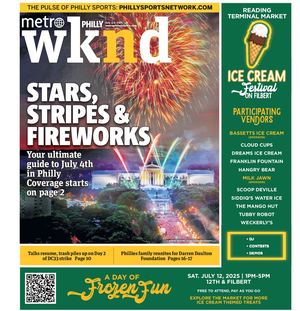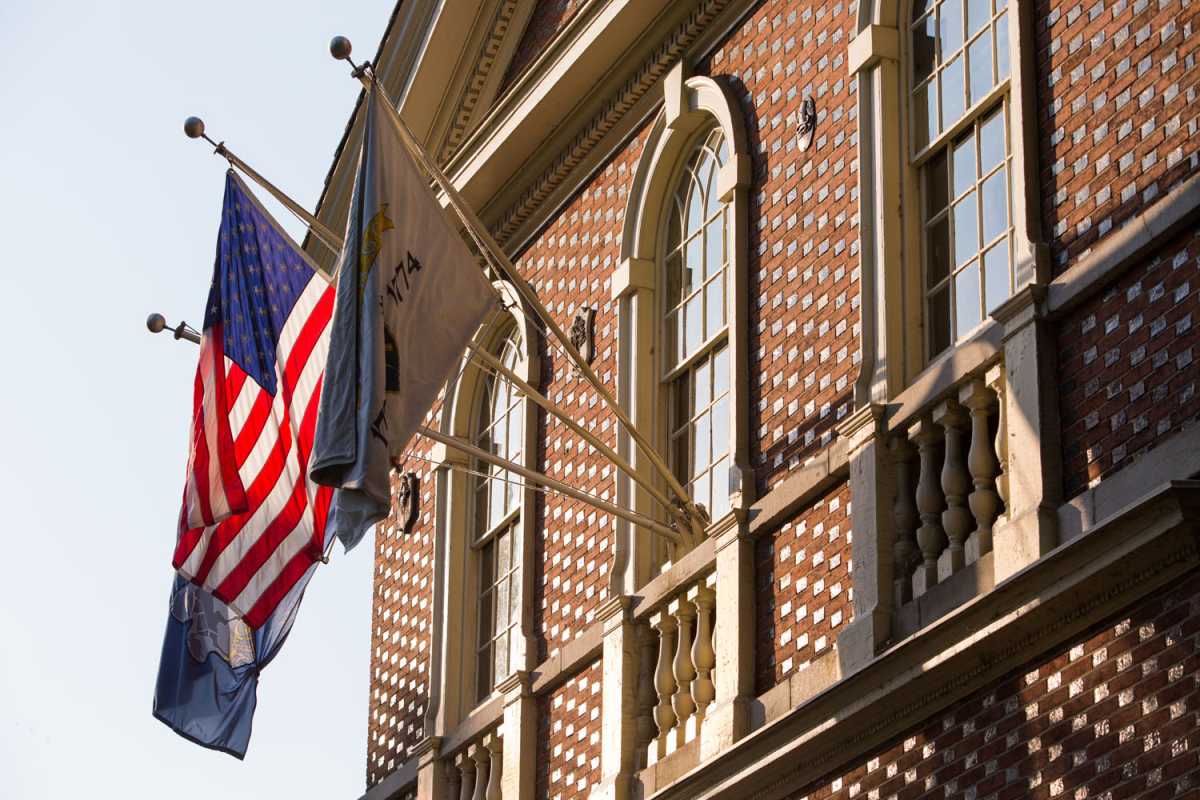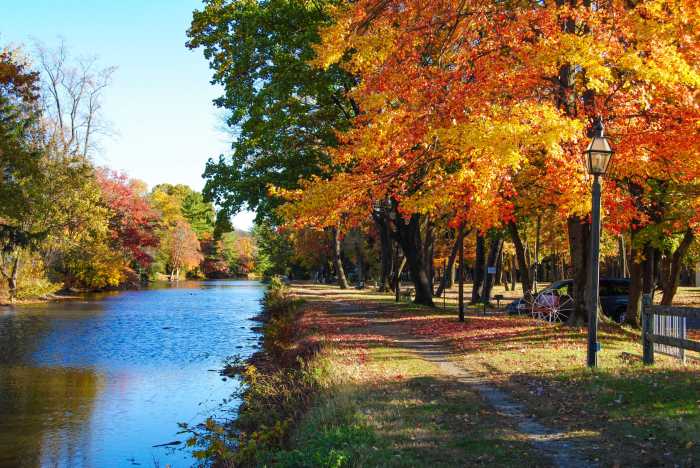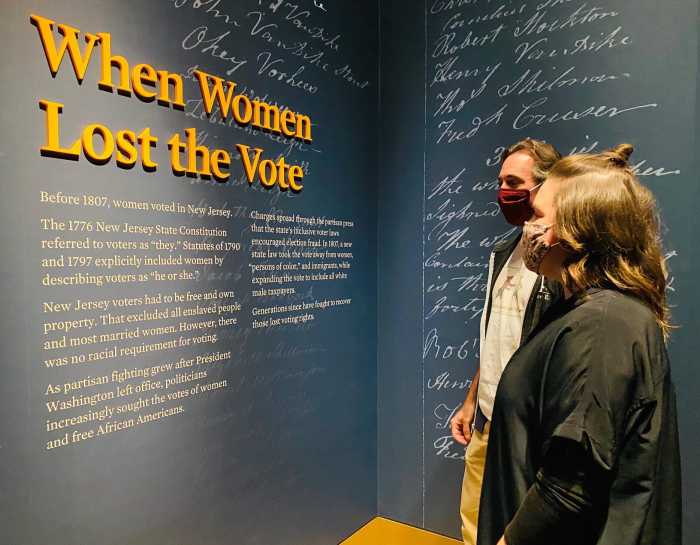Carpenters’ Hall stands today just a few blocks from Independence Hall and the Liberty Bell, and many people don’t know just how much historical significance this building holds. In fact, Carpenters’ Hall has many institutional connections that make the building and those who utilize it very much a part of our own city’s history—and one new exhibit is taking that idea to another level.
“Places For People” will feature historic travel posters highlighting different Philadelphia and Pennsylvania landmarks, such as the Betsy Ross House, Memorial Hall, Fairmount Park and Independence Hall. The posters were all commissioned in the 1930s by the Federal Art Project of the Works Progress Administration (WPA) to promote tourism in Pennsylvania and to also provide artists with paid work during the Great Depression. The most intoxicating draw to the exhibit is the fact that several of the posters have never been on display to the public. ‘Places for the People’ showcases not only that history can still hold significance, but also that what our country may go through today isn’t quite as different than what happened years ago—and since then we have persevered.
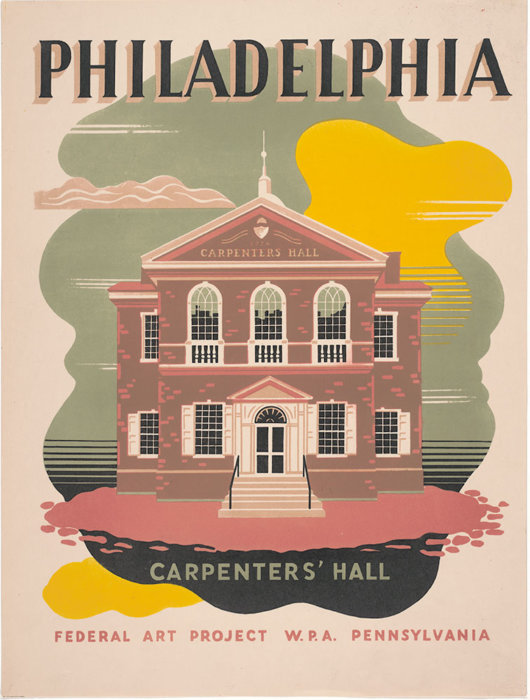
“Carpenters’ Hall has a long history as a meeting place and a deep connection to the history of travel and tourism in the United States,” Michael Norris, Executive Director of The Carpenters’ Company of the City and County of Philadelphia said in a statement. “This exhibition celebrates travel, especially local travel, which is even more valuable at this time.”
The temporary exhibit, which opens on Nov. 6, is in partnership with Posters for the People, which was started in 2002 as a dedicated way to build the most comprehensive record of the posters created under the New Deal’s Federal Art Project. The largest collection of posters now sits in the Library of Congress with slightly more than 900 posters, but now Philadelphians will get a taste of the project starting this week. Through the efforts of Posters for the People, over 2,000 posters have been found and collected and nine posters will be on display during the exhibition. But for this specific exhibit in the City of Brotherly Love, a never before seen poster of Carpenters’ Hall will be unveiled after being found in a collection at the Free Library of Philadelphia several years ago.
The new exhibit is not the only historic draw to Carpenter’s Hall, which was built by The Carpenters’ Company of the City and County of Philadelphia, the oldest craft guild in America, in 1774. The building itself is a sight for curious eyes and the contents inside also match the uniqueness of “Places for People.”
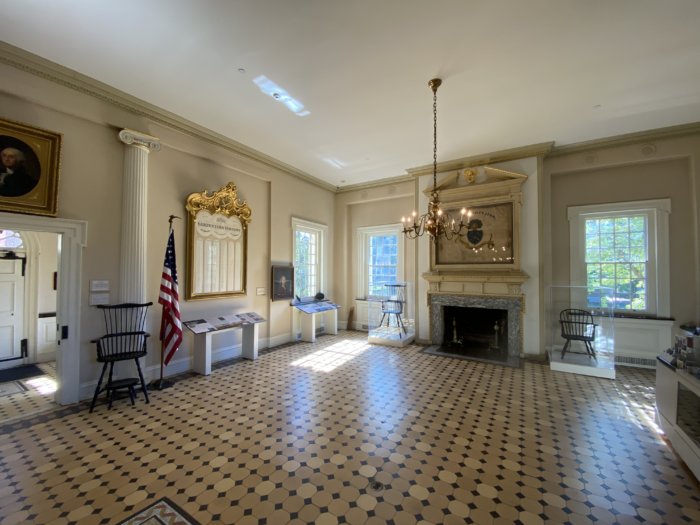
The building itself is an artifact, with plenty of historical events and happenings engrained in the walls’ memories. For instance, Carpenters’ Hall was once home to Benjamin Franklin’s Library Company of Philadelphia, the American Philosophical Society and the First and Second Banks of the United States. However, the Hall might be most well known as the meeting place for events that took place from Sept. 5 to Oct. 26, 1774— otherwise known as the First Continental Congress.
Most recently added to the Hall is a sketch of a mural by renowned artist Allyn Cox documenting the First Continental Congress, which he created for the U.S. Capitol before his death in 1982. On top of the new sketch, the historic establishment is also offering visitors to participate in its My Wish for U.S. initiative, coordinated by the Smithsonian’s National Museum of American History. Visitors who participate in this new initiative will be able to use their mobile device to share a vision, hope, or wish for the future of our country, which is in its 250th year.
Artifacts wise, Carpenters’ Hall also houses two original Windsor chairs, including one used by the president of the First Continental Congress, Peyton Randolph. According to a release, before the British captured Philadelphia in 1777, it is said that members moved the chairs to their homes for safekeeping and branded them with the words “Carpenters’ Co.” under the seat, and the Hall now holds a couple of those very chairs. Other artifacts found inside Carpenters’ Hall include gilded frame membership boards, a model of Carpenters’ Hall, paintings of George Washington and early Company member Matthew McGlathery, and officers’ furniture from 1890.
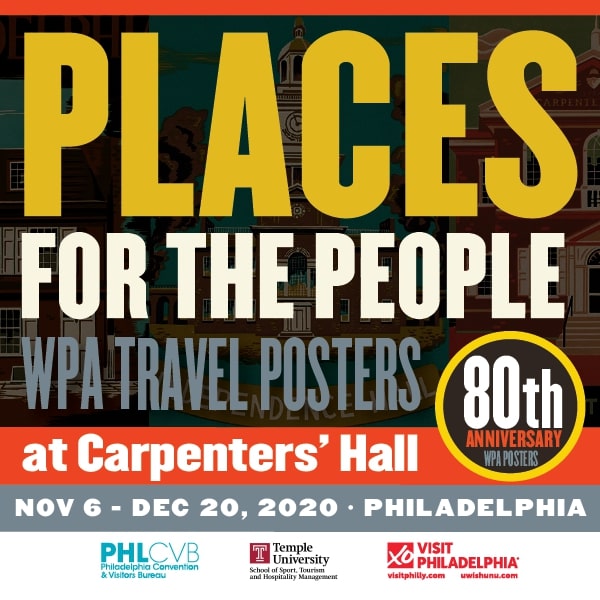
According to the release, “Places for the People” is sponsored in part by the Philadelphia Convention & Visitors Bureau, The School of Sport, Tourism and Hospitality Management at Temple University, and Visit Philadelphia. The exhibition is curated by Ennis Carter, director of Posters for the People and author of Posters for the People: Art of the WPA.
For more information on “Places for People” (on display Nov. 6 to Dec. 20) visit carpentershall.org
